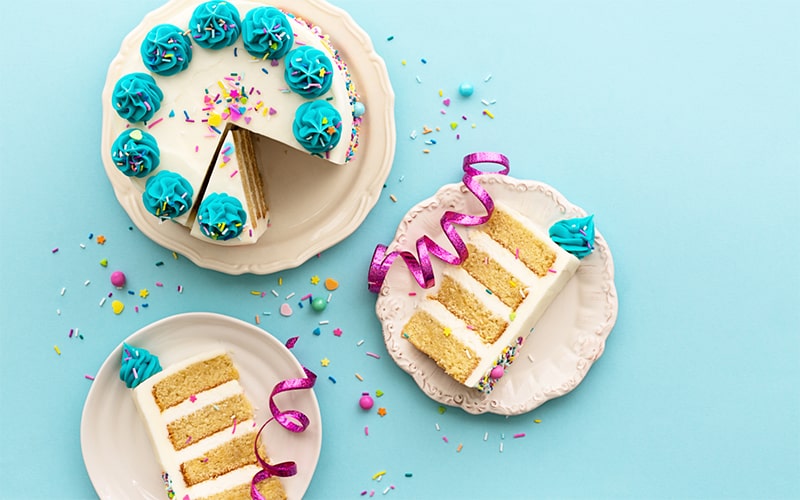Even if you want to cut back on screen time, it’s not always in your control. For example, you can’t exactly tell your boss you’re going to start signing off work a few hours early for the sake of your eyes. And watching your favorite show definitely counts as self-care, so you’re not nixing that either, right? Fortunately, there’s something we can control that does our eyes a favor: filling up on foods scientifically linked to supporting your peepers.
Maybe if we knew just how much we’d be staring at screens as adults, we all would have given carrots a bit more attention when we were kids. (Confession: The family dog probably ate more of what was on my plate than I did.) But according to registered dietitian Jenna Stangland, RD, it’s not too late to start working foods for eye health into your meal rotation—and you certainly aren’t limited just to carrots.
Carrots are often talked about as a superfood for eye health because they’re rich in beta-carotene. Beta-carotene is used to produce vitamin A, and vitamin A helps the brain see better in low light. But Stangland has a whole slew of other foods for eye health on her list, which she reveals below. Let’s get into it.
6 foods for eye health, according to a registered dietitian
1. Bell peppers
“Vibrantly-colored bell peppers are high in vitamin A, which is great for eye health,” Stangland says. “The reason why vitamin A is so important for eye health is because it’s an antioxidant that grabs ahold of oxidative stress and prevents it from further damaging cells, including in the eyes.” She also says that bell peppers contain lutein and zeaxanthin, two major nutrients for eye health. “What’s unique about lutein is that it’s the only carotenoid [a type of antioxidant] that migrates to the retina,” Stangland says. She explains that lutein acts as a blocker to damaging blue light, radiating from screens. Zeaxanthin, she says, works similarly. “It’s sunblock for the eyes,” she says.
But something that’s important to know about this food, Stangland says, is that vitamin A is fat-soluble. This means you should pair your bell peppers with a good source of healthy fats. “One way to do this is by roasting or stir-frying them with olive oil,” Stangland suggests.
2. Eggs
What’s cool about lutein and zeaxanthin is that Stangland says the nutrients are often found together in the same foods. One such food is eggs. “Lutein and zeaxanthin are specifically found in the yolky part of the egg,” she says. Other nutrients you’ll find in the yolk include magnesium, calcium, iron, potassium, and zinc. So you can add eye health as yet another reason why you shouldn’t just go for the whites.
Watch the video below to learn more about the health benefits of eggs:
3. Dark leafy greens
Stangland says that another place you’ll find lutein and zeaxanthin is dark leafy greens like kale and spinach, so if you’re vegan, don’t think that you’re SOL. “All dark leafy greens have these nutrients, which is just another reason why dietitians are so often recommending them to people,” Stangland says.
4. Broccoli
You probably already know that broccoli is a great source of fiber, but did you know that it packs plenty of lutein and zeaxanthin too? Stangland says it does, which means the cruciferous veg is a great food for eye health. “The body can’t make lutein and zeaxanthin, which is why it’s so important to eat foods that have it,” Stangland says. Now you know one more that’s pretty widely accessible.
5. Chickpeas
Filling up on foods with lutein and zeaxanthin is great, but Stangland says another nutrient to be mindful of is zinc. “Zinc is the carrier of vitamin A, and again, that’s important because vitamin A helps protect the body from oxidative stress,” she says. One source of the nutrient is chickpeas, which has 1.5 milligrams of the nutrient per serving. (Zinc is a trace mineral, so while important, we only need small amounts of it.)
Watch the video below to learn more about the health benefits of chickpeas:
6. Pumpkin seeds
Stangland says that pumpkin seeds are another great source of zinc, with a full 10 milligrams per serving. Add ’em to your a salad made with leafy greens, broccoli, and bell peppers and you have yourself one powerhouse meal for eye health.
While all the foods on this list are pretty accessible, Stangland says that there are times when you may want to consider a supplement. “Ideally, you want to aim to get 10 milligrams of lutein a day and the average person gets less than three,” she says. She recommends one called Screen Shield Pro by Eye Promise ($39) to her clients. “Some days, it’s hard to get up to those 10 milligrams,” she says.
Keep these tips in mind and you’ll help your eyes out, which is especially important when limiting screen time isn’t an option. You could call this advice, well, insightfull.
Oh hi! You look like someone who loves free workouts, discounts for cutting-edge wellness brands, and exclusive Well+Good content. Sign up for Well+, our online community of wellness insiders, and unlock your rewards instantly.
Our editors independently select these products. Making a purchase through our links may earn Well+Good a commission.






